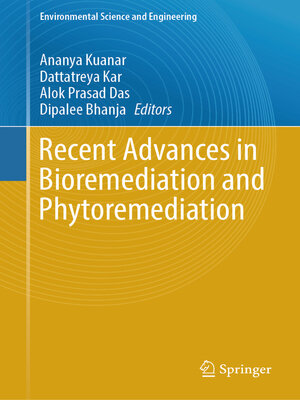Recent Advances in Bioremediation and Phytoremediation
ebook ∣ Environmental Science and Engineering
By Ananya Kuanar

Sign up to save your library
With an OverDrive account, you can save your favorite libraries for at-a-glance information about availability. Find out more about OverDrive accounts.
Find this title in Libby, the library reading app by OverDrive.



Search for a digital library with this title
Title found at these libraries:
| Library Name | Distance |
|---|---|
| Loading... |
This book focuses on a number of recently created and successfully used bio/phytoremediation technologies for pollution reduction and control that were not given more thorough discussion in earlier works. The earth's crust contains heavy metals naturally as one of its constituents. The main cause of the discharge of harmful metals into the soil and aquatic habitats, aside from natural sources, is man-made activity, particularly industrialization. As a result of various human activities, excessive amounts of heavy metals—including chromium, arsenic, lead, mercury, copper, and zinc—are released into the environment. These metals eventually contaminate agricultural soils and water bodies and have a negative effect on the ecosystem. Additionally, even at very low concentrations, heavy metal poses a dangerous threat to both humans and animals due to its tremendous toxicity. Appropriate remediation technology is needed to address the problems caused by toxic heavy metal contamination. The technology should be affordable, eco-friendly, and provide long-term solutions. Such required properties are offered by biological remediation approaches, such as microbial and phytoremediation, for the treatment of heavy metal contamination. The discussion of biological remediation technologies as a sustainable method involves several techniques involved in the removal of harmful heavy metals.







